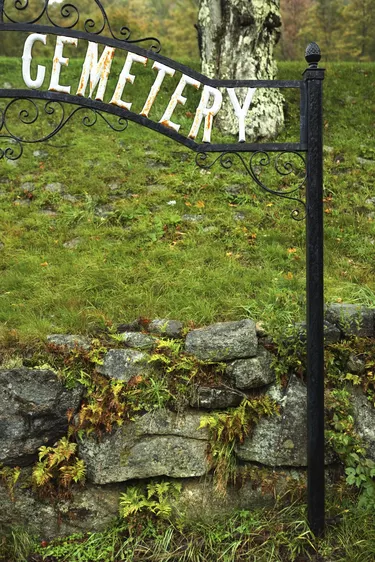
While many funeral planners urge clients to make their own funeral arrangements in advance to help their heirs avoid burial expenses, advance planning has a drawback: Sometimes plans change. If you purchased a cemetery plot that you no longer plan to use, the cemetery may allow you to transfer the property to someone else. If you're able to sell your plot, you may need to report the sale to the Internal Revenue Service and pay capital gains taxes on the transaction.
Cemetery Plots Are Capital Assets
Video of the Day
The IRS considers most items you purchase, including cemetery plots, a capital asset, and requires you to track the sales of capital assets as part of your taxes. Because most items you purchase depreciate with use over time, they're rarely addressed as a capital asset for tax purposes.
Video of the Day
For example, that car you drove for five years and sold for 45 percent of its purchase price doesn't need to be accounted for, in most cases. Cemetery plots, however, may be treated more as an investment, with claims of capital gains and losses necessary following its sale.
Consider also: Depreciation of Business Assets: Definition, Calculation & How it Affects Your Taxes
Calculating Gains or Losses
The IRS requires you to determine your gains or losses starting at the price for which you purchased your cemetery plot. When you sell the plot, you calculate your profits – referred to as gains – or losses against its basis. If you sold the plot for more than its basis, you must report the profit as a capital gain, and pay capital gains taxes on the profits.
The IRS calculates gains tax rates based on how long you held the asset. If you owned the plot for longer than a year, it's considered a long-term gain, and in 2021/22 the profit is taxed at 0, 15 or 20 percent depending on your income. If you owned the plot for 365 days or less, it's a short-term gain, and the tax rate is the same rate as you'd pay on your ordinary income, such as your salary from your employment.
Capital Loss Offset
While the IRS expects you to pay taxes on any profits made from selling a cemetery plot, it also provides you with a few breaks if you sell it for a loss. If you report a sale of the plot for less than its basis, you can claim the difference as a capital loss. If you have other gains, such as from the sale of stock, you can use the loss from the cemetery plot to offset those gains, reducing your gains tax liability.
If your losses exceed your gains, or you don't report gains, you may claim up to $3,000 in losses as a deduction against other forms of income, such as your wages.
Inherited Cemetery Plots
If you're the heir to a cemetery plot that wasn't used by the person who purchased it, the IRS allows you to calculate gains and losses using the fair market value of the plot on the day its original owner died, rather than using his original purchase price or zero as your basis. Fair market value is defined as the price the cemetery would sell a similar plot for at the time of the original owner's death.